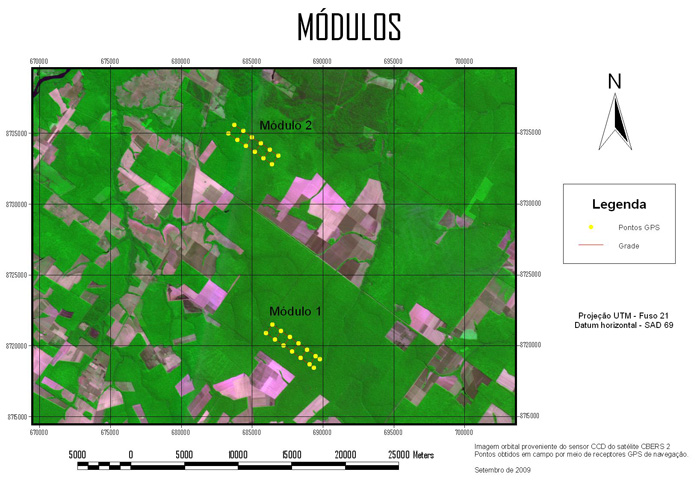Languages
Sinop Regional Center
The Sinop Regional Nucleus was created in 2008 with the approval of the project: "Biodiversity in three areas in the southern Amazon: integrating information to support conservation plans" and is based in Sinop University Campus of the Federal University of Mato Grosso, located in the City of Sinop-MT. The researchers at UFMT realized the importance of knowing about the biodiversity of the Mato Grosso Amazon, which is being transformed by habitat and species loss.
The initial project allowed for the training of undergraduate and postgraduate students and local researchers, and this training was fundamental for the expansion of the modules in difficult access regions. In addition, the researchers created the Center for the Study of Biodiversity of the Mato Grosso Amazon, which is part of the Sinop NR.
Partnerships with various local institutions UNEMAT and EMBRAPA were created and also with private companies such as Maracai and ONF-Brasil.
New research modules were established in the northwest and extreme north of Mato Grosso. The module installed in the northwest is located in the São Nicolau Farm of the PSA-Peugeot Group, which contributes to the project by providing accommodation and food.
In 2010, UFMT signed a technical cooperation agreement with the State Secretariat of Environment of Mato Grosso to install the PPBio modules in the State Conservation units. The first UC to have the module was that of the Cristalino State Park and resulted in several scientific articles as well as the publication of a book on local Biodiversity. Currently, Sinop NR is installing the sixth PPBio module in the State of Mato Grosso at the Rio Ronuro Ecological Station in the southern portion of the Amazon.
The Mato Grosso PPBio has managed to attract researchers from national and international institutions because of the inventory work and, importantly, the thematic projects. Knowledge of the biodiversity of this region is being revealed and new information on species distribution patterns is being uncovered. Currently there are 56 installed plots and 12 in the process of installation, material collected in the plots is complementing the graduate practical classes and augmenting the collection of the Museum of the fauna and flora of the Mato Grosso Amazon which has already reached more than 2500 samples in its collection. The work has also increased the collections of the zoological and botanical collections of the Biological Collection of the Southern Amazon.
The postgraduate programs in Ecology and Conservation of Biodiversity and the Environmental Sciences use the modules for field course and data collection for the accomplishment of dissertations and theses. NR Sinop has been developing research in selective woodcutting areas as well as in intact native forest in order to know the distribution patterns of the species and the factors that affect them. In addition, it aims to contribute to the formulation of local and regional public policies. Students and researchers who want to contribute to the knowledge of the biodiversity of the Amazon Mato Grosso and, mainly for their conservation are invited to join the NRSinop team.

Contact:
Domingos de Jesus Rodrigues
Email: djmingo23@gmail.com
Universidade Federal de Mato Grosso
NEBAM - Núcleo de Estudos da Biodiversidade da Amazônia Matogrossense
Instituto de Ciências Naturais, Humanas e Sociais
Av. Alexandre Ferronato, 1200,
Setor Industrial
Cep: 78557-267 Sinop - MT
Fone: (66)3531-1663
NEBAM - Núcleo de Estudos da Biodiversidade da Amazônia Matogrossense
Instituto de Ciências Naturais, Humanas e Sociais
Av. Alexandre Ferronato, 1200,
Setor Industrial
Cep: 78557-267 Sinop - MT
Fone: (66)3531-1663

